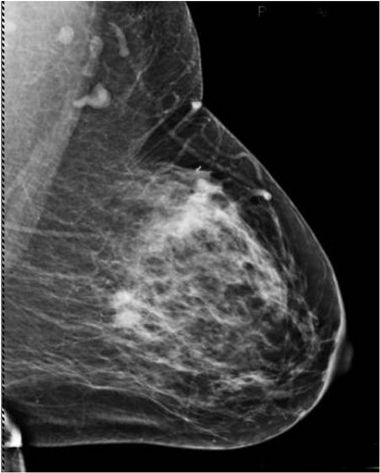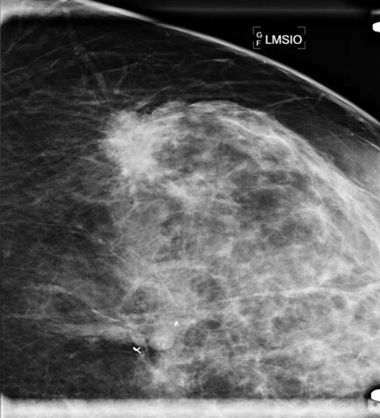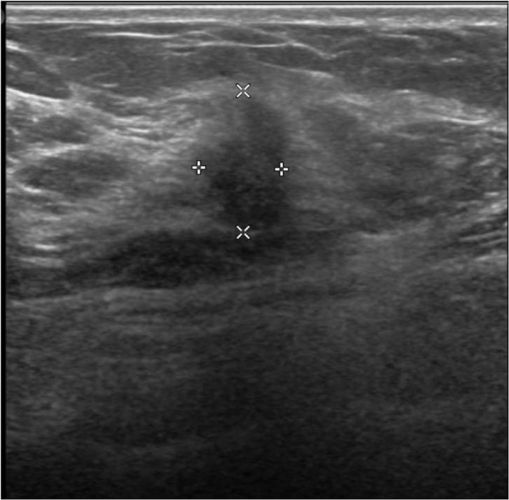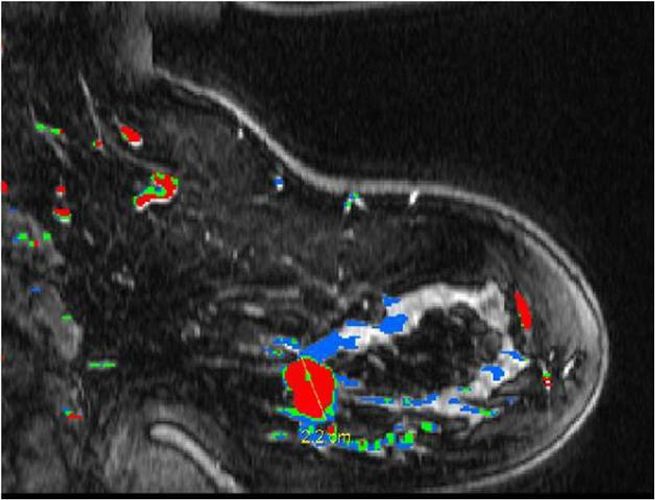- AI
- Molecular Imaging
- CT
- X-Ray
- Ultrasound
- MRI
- Facility Management
- Mammography
Invasive Mammary Carcinoma
A 46-year-old patient presents for routine screening mammography. Family history of breast cancer consists of a maternal aunt and grandmother.
CLINICAL HISTORY
A 46-year-old patient presents for routine screening mammography. Family history of breast cancer consists of a maternal aunt and grandmother.
FINDINGS
Digital mammography reveals an irregular 2.2cm mass in the left breast, approximately 10cm from the nipple (Figure 1a-b). The mass persists on the magnification view (Figure 1c).

(Figure 1a)

(Figure 1b)

(Figure 1c)
On physical exam, no discrete mass is palpated. Ultrasound demonstrates an irregular hypoechoic mass within the left 3:30 area measuring up to 1.4cm (Figure 2).

(Figure 2)
MRI imaging performed for extent of disease demonstrates the known carcinoma measuring 2.0 x 2.2cm in the left breast (Figure 3a-b).

(Figure 3a)

(Figure 3b)
DIAGNOSIS
Vacuum assisted stereotactic needle core biopsy of the left breast 3:30 mass reveals invasive mammary carcinoma.
DISCUSSION
This case demonstrates the benefit of screening mammography in a premenopausal woman. This was a large lesion that was not palpable and was not found by the patient or her physician. This was identified on the screening mammogram which initiated additional evaluation with magnification views, ultrasound, stereotactic biopsy, and subsequent breast MRI.
Stamatia Destounis, MD, is managing partner and a radiologist at Elizabeth Wende Breast Care in Rochester, NY.
Can a CT-Based Radiomics Model Bolster Detection of Malignant Thyroid Nodules?
May 3rd 2024A computed tomography (CT)-based radiomics model that includes 28 radiomic features showed significantly higher accuracy, sensitivity, and specificity than conventional CT in differentiating benign and malignant thyroid nodules, according to newly published research.
Contrast-Enhanced Mammography and Dense Breasts: What a New Meta-Analysis Reveals
May 1st 2024The 10-study meta-analysis demonstrated that contrast-enhanced mammography has a 95 percent sensitivity rate and an 81 percent specificity rate for diagnosing suspicious lesions in women with dense breasts.
